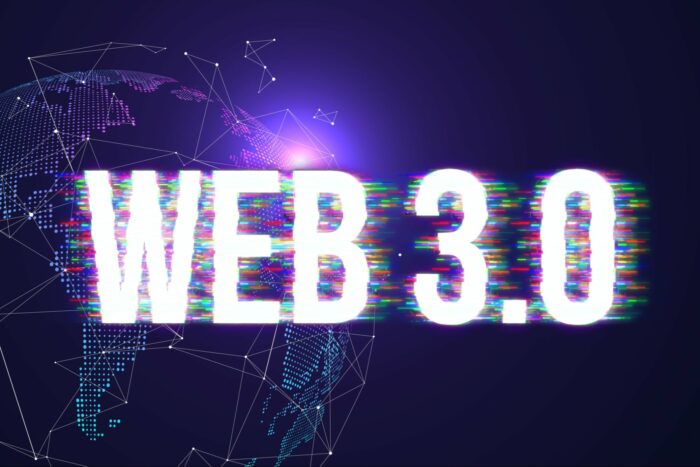This article explores the concept of Web 3 and its impact on digital exchanges, providing an in-depth guide on what it means, how it works, and what the future holds.

Introduction
The internet has come a long way since its inception, evolving from a static information-sharing platform (Web 1.0) to an interactive and social web (Web 2.0). Now, we’re on the brink of the next phase: Web 3. With the rise of blockchain technology, decentralized applications (dApps), and digital currencies, Web 3 is set to redefine how we interact with the digital world.
What is Web 3?
Web 3, or Web 3.0, represents the next generation of internet technology, emphasizing decentralization, user control, and enhanced security. Unlike Web 2.0, which is dominated by centralized platforms and data silos, Web 3 aims to create an open and decentralized web where users have greater control over their data and interactions.
The Role of Blockchain Technology
Blockchain technology is at the heart of Web 3. It provides a decentralized ledger system that ensures transparency, security, and immutability of data. This technology underpins various applications within Web 3, including cryptocurrencies, smart contracts, and decentralized finance (DeFi).
The Evolution of Digital Exchanges
Traditional Exchanges
Traditional exchanges have been the backbone of financial markets for decades. They act as intermediaries, facilitating the buying and selling of assets such as stocks, commodities, and currencies. However, these exchanges are centralized, often leading to issues such as high fees, limited accessibility, and lack of transparency.
The Rise of Cryptocurrency Exchanges
The advent of Bitcoin in 2009 marked the beginning of a new era for digital exchanges. Cryptocurrency exchanges emerged to facilitate the trading of digital assets, providing a decentralized alternative to traditional financial systems. These exchanges have since evolved, offering a wide range of services, including spot trading, futures trading, staking, and more.
The Advent of Decentralized Exchanges (DEXs)
Decentralized exchanges (DEXs) represent the next step in the evolution of digital exchanges. DEXs operate without a central authority, allowing users to trade directly with each other. This peer-to-peer trading model enhances security, privacy, and transparency while reducing the risk of hacks and fraud associated with centralized exchanges.
Key Components of Web 3 Exchanges
Decentralization
Decentralization is the cornerstone of Web 3 exchanges. By eliminating the need for intermediaries, these exchanges empower users with direct control over their assets and transactions. This not only enhances security but also fosters a more inclusive financial ecosystem.
Smart Contracts
Smart contracts are self-executing contracts with the terms of the agreement directly written into code. They automatically execute transactions when predefined conditions are met, reducing the need for intermediaries and minimizing the risk of human error. Smart contracts play a crucial role in the functionality of Web 3 exchanges.
Interoperability
Interoperability refers to the ability of different blockchain networks to communicate and interact with each other. This is essential for Web 3 exchanges, as it enables seamless trading of assets across multiple blockchains, fostering a more interconnected and versatile financial ecosystem.
Privacy and Security
Web 3 exchanges prioritize user privacy and security. By leveraging cryptographic techniques and decentralized infrastructure, these exchanges protect user data and assets from unauthorized access and cyber threats.
Benefits of Web 3 Exchanges
Enhanced Security
By eliminating central points of failure, Web 3 exchanges offer superior security compared to their centralized counterparts. The use of blockchain technology and smart contracts ensures that transactions are transparent, tamper-proof, and resistant to hacks.
Greater Transparency
Transparency is a fundamental feature of Web 3 exchanges. All transactions are recorded on a public ledger, providing users with full visibility into the exchange’s operations. This fosters trust and accountability within the ecosystem.
Reduced Fees
Web 3 exchanges typically have lower fees than traditional and centralized exchanges. By removing intermediaries, these platforms reduce the cost of transactions, making trading more accessible and cost-effective for users.
User Empowerment
Web 3 exchanges give users full control over their assets and data. This user-centric approach contrasts sharply with the centralized nature of Web 2.0 platforms, where users often have limited control over their information.
Challenges and Limitations
Scalability
Scalability remains a significant challenge for Web 3 exchanges. While blockchain technology offers numerous benefits, it also faces limitations in terms of transaction speed and capacity. Ongoing research and development aim to address these issues and improve the scalability of decentralized platforms.
Usability
Despite their advantages, Web 3 exchanges can be complex and challenging to use for non-technical users. Improving the user experience and making these platforms more intuitive is crucial for widespread adoption.
Regulatory Uncertainty
The regulatory landscape for Web 3 exchanges is still evolving. Navigating the complex and often unclear regulatory environment poses a challenge for these platforms. Clear and consistent regulations are necessary to foster growth and innovation within the space.
Getting Started with Web 3 Exchanges
Choosing the Right Exchange
When selecting a Web 3 exchange, consider factors such as security, fees, supported assets, and user experience. Research and compare different platforms to find one that meets your needs.
Setting Up a Wallet
To use a Web 3 exchange, you’ll need a compatible digital wallet. Wallets store your private keys and enable you to interact with the blockchain. Popular options include MetaMask, Trust Wallet, and Ledger.
Connecting Your Wallet to the Exchange
Once you have a wallet, you can connect it to the Web 3 exchange. This process typically involves scanning a QR code or entering your wallet address. Ensure that you follow the exchange’s instructions carefully to avoid any issues.
Trading on a Web 3 Exchange
Trading on a Web 3 exchange involves interacting with smart contracts. You’ll need to understand the basics of cryptocurrency trading, including order types, market trends, and risk management. Start with small trades to familiarize yourself with the platform before committing larger amounts.
The Future of Web 3 Exchanges
Advancements in Technology
Ongoing advancements in blockchain technology, such as layer 2 solutions and cross-chain interoperability, are set to enhance the performance and functionality of Web 3 exchanges. These developments will address current limitations and unlock new possibilities for decentralized trading.
Increased Adoption
As awareness and understanding of Web 3 grow, we can expect increased adoption of decentralized exchanges. Improved user interfaces, educational resources, and regulatory clarity will drive more users to explore and embrace these platforms.
Integration with Traditional Finance
The integration of Web 3 exchanges with traditional financial systems holds significant potential. This convergence will create a hybrid financial ecosystem, combining the strengths of both centralized and decentralized platforms to offer users a more robust and versatile experience.
Conclusion
Web 3 and its associated technologies represent a paradigm shift in how we interact with the digital world. By embracing decentralization, transparency, and user empowerment, Web 3 exchanges are poised to transform the financial landscape. While challenges remain, ongoing advancements and increased adoption will pave the way for a more secure, transparent, and inclusive financial future. Whether you’re a seasoned trader or a curious newcomer, exploring Web 3 exchanges offers a glimpse into the future of finance.
Read Related Posts
Solana: The High-Speed Blockchain Revolution
TON (The Open Network): Future of Decentralized Communication
History of Ethereum: A Journey of Innovation and Decentralization
FAQs
A Web 3 exchange is a decentralized platform that allows users to trade digital assets directly with each other, leveraging blockchain technology and smart contracts for enhanced security and transparency.
To start using a Web 3 exchange, you’ll need a compatible digital wallet. Once you have a wallet, you can connect it to the exchange and begin trading. Ensure you understand the basics of cryptocurrency trading and follow the exchange’s instructions carefully.
Web 3 exchanges offer enhanced security compared to traditional and centralized exchanges. By eliminating central points of failure and leveraging blockchain technology, these platforms protect user data and assets from unauthorized access and cyber threats.
Web 3 exchanges offer numerous benefits, including enhanced security, greater transparency, reduced fees, and user empowerment. These platforms provide users with direct control over their assets and transactions.
Challenges of Web 3 exchanges include scalability, usability, and regulatory uncertainty. Ongoing advancements in technology and increased adoption will address these issues and unlock new possibilities for decentralized trading.


